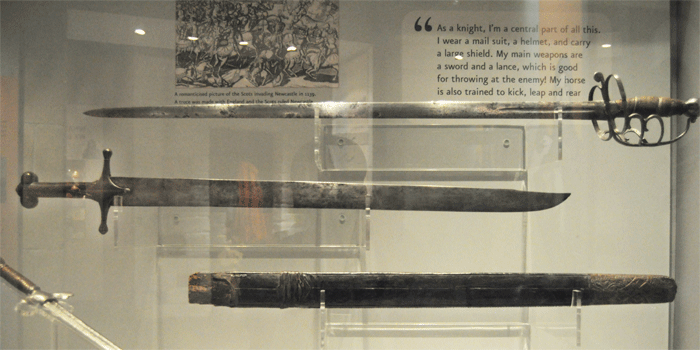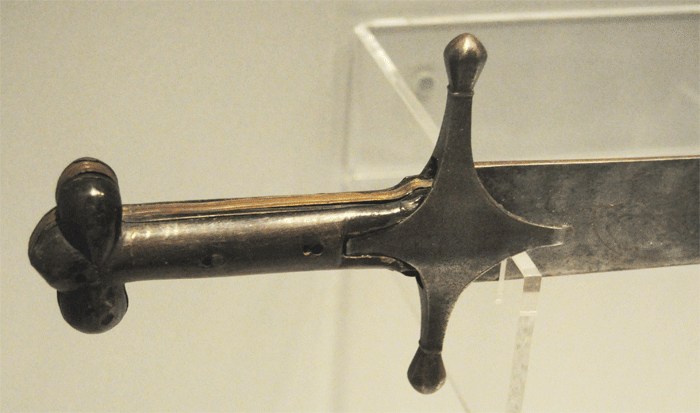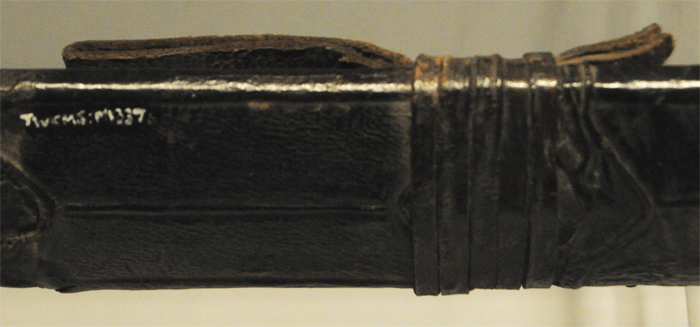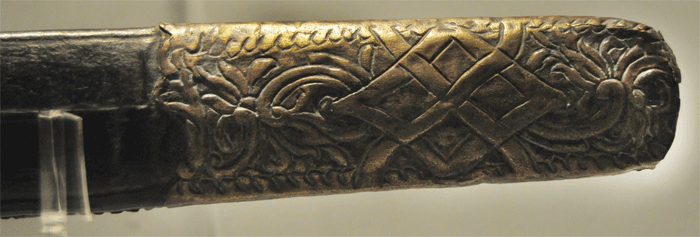"Double-edged, steel blade, slightly curved at the point and having an inlaid (gold ?) cockrel emblem near the tang. The two quillons incorporate a diamond-shaped centre which holds the sheath in position. The grip is wooden, edged in copper with brass rivets and has a fleur de lys shaped pommel, which is a continuation of the grip. The sheath is black leather covered wood with an embossed brass covering on the lower end. It has a wide leather loop on the back which is attached by thonging. From France or Poland, 18th century."
So, French or Polish, 15th or 18th c.! Clearly single-edged, of course. My first thought was East-Central Europe (Austria?) or Eastern Europe, and maybe 17th c. But I think I've seen hilts of that tri-lobate type much earlier in Austrian/German contexts. The coarse stitching of the scabbard does look 18th c.
What are your thoughts?






